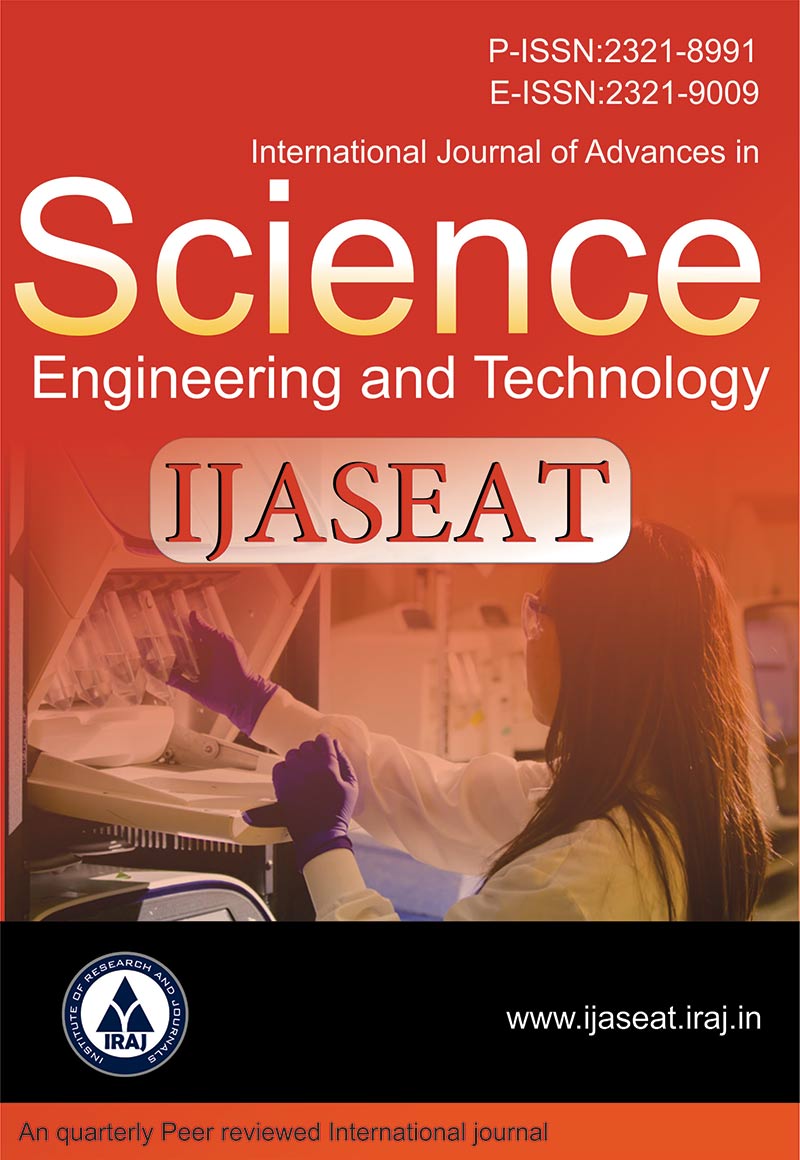Publish In |
International Journal of Advances in Science, Engineering and Technology(IJASEAT)-IJASEAT |
 Journal Home Volume Issue |
||||||||
Issue |
Volume-4,Issue-4, Spl. Iss-2 ( Dec, 2016 ) | |||||||||
Paper Title |
Quantification of E. Coli. Bacteria in Drinking Water by The Means of Ammonia Sensing | |||||||||
Author Name |
Anuj Prajapati, Jaghadeeshwaran R., Meghana Urs, Eswar Sai Avinash M, Vijay Mishra, Puneet Sharma | |||||||||
Affilition |
Main Author, Summer Intern, Systems Engineering Facility (SysEF), Centre for Nano Science and Engineering (CeNSE), Indian Institute of Science (IISc), Bangalore, India | |||||||||
Pages |
18-21 | |||||||||
Abstract |
Microbial contamination of water has long been a concern to the public. All water supplies should be tested for biological content prior to use and consumption. E. coli is the coliform bacterial organism that is a major contaminant found in drinking water. The presence of E.coli in water indicates recent faecal contamination and may indicate the possible presence of disease-causing pathogens, such as bacteria, viruses, and parasites. Hence the detection of such bacteria in the drinking water has found prime importance recently. In this study, the pathogen bacteria E. coli in drinking water was quantified by the means of Ammonia (NH3) gas sensor and a heater which were coupled into a chamber. Bacteria were heated by the heater in air so that ammonia can be generated by the oxidation reaction of organic components of bacteria. The NH3 gas was generated in a closed chamber and detected by the FigaroTM TGS 826 Ammonia gas sensor mounted on the top. Bacterial concentrations up to 108 cells/ml were quantified by this study. Product: Using the above mechanism, a product was developed as a part that can be integrated into a typical household water purification system.A drop is taken from a stream of water running in the purification system and placed onto the heating surface by means of a drop dispenser.Upon integration with the water purifier assembly, this product continuously detects the amount of E. coli.in drinking water and alerts the user of contamination if the bacterial concentration is above a set limit. Keywords— Microbial Contamination, E.coli., Drinking Water, Ammonia Sensing. | |||||||||
| View Paper | ||||||||||